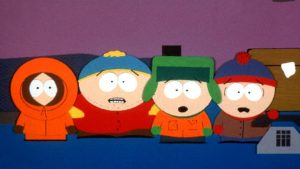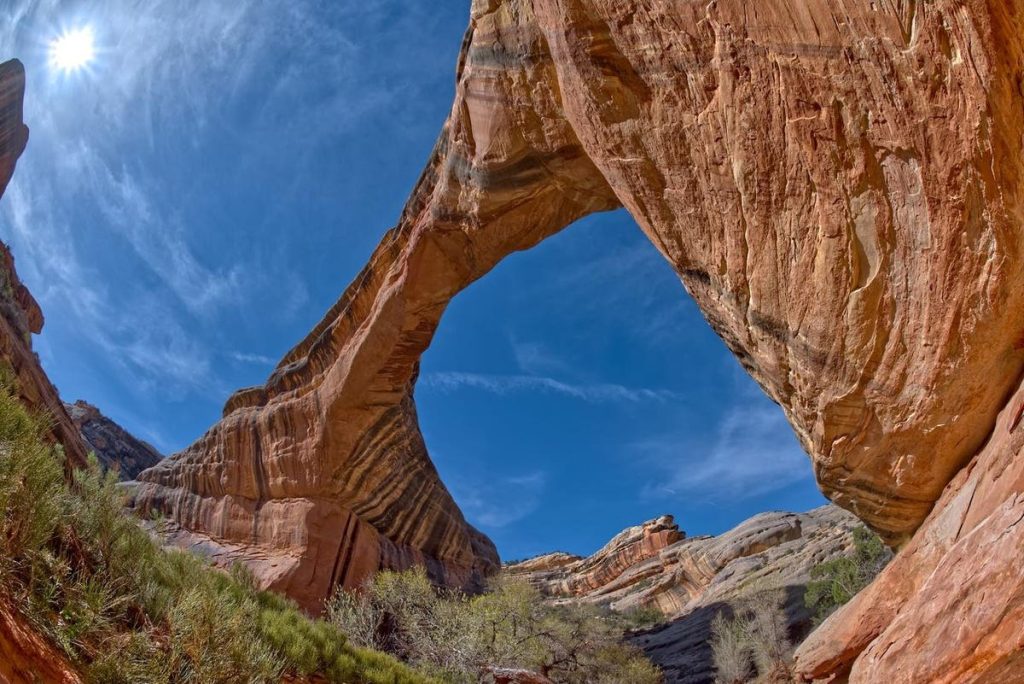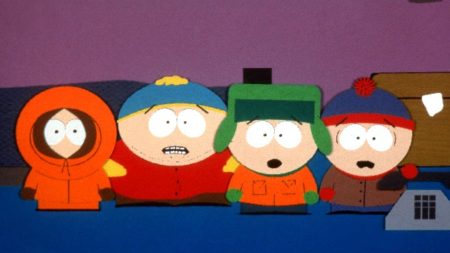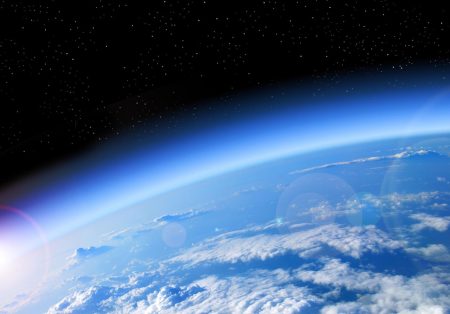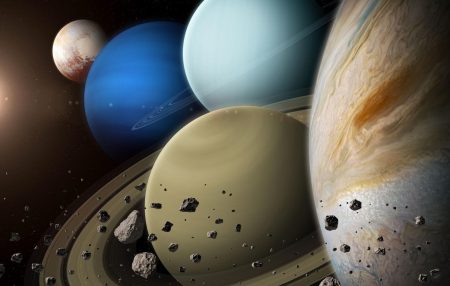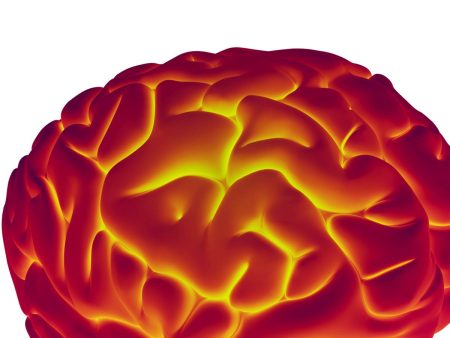I’m the world’s only “eclipse journalist.” For the very latest on the “ring of fire” solar eclipse—including the latest travel and lodging options—please press the big blue “follow” button above or check my main feed for new articles each day.
The “ring of fire” solar eclipse may be visible from nine U.S. states on Saturday, Oct. 14, but it’s to Utah that a large number of eclipse-chasers will head.
Only from within a narrow 125 miles wide path will it be possible to see the “ring of fire” (most Americans will see a partial solar eclipse), but within Utah there are so many scenic choices. The state also has a favorable climate for clear skies and some of the darkest night skies in the U.S.
Entering the state at 10:24 am MDT on Oct. 14, the “ring of fire” will last as long as 4 minutes and 40 seconds in Utah close to the centerline, according to GreatAmericanEclipse.com.
It will cross many U.S. National Parks—from Canyonlands, Capitol Reef and Bryce Canyon to Grand Staircase-Escalante, Glen Canyon and Rainbow Bridge.
And that’s just for starters. Here are 12 places to see the “ring of fire” in Utah:
1. Bryce Canyon National Park
10:27 a.m. MDT, 2 minutes 36 seconds
Over 10,000 visitors came to Bryce Canyon National Park for the 2012 “ring of fire,” so expect “a very busy day.” The Bryce Canyon shuttle and shared-use bike path will be the only ways of getting in and out, though there are organized events. The night before will see a lecture at 8 p.m. at the North Campground Outdoor Theater by NASA Lunar Scientist Dr. Barbara Cohen while the night after the eclipse will feature an evening program by Caltech postdoctoral fellow Cameron Hummels, also at 8 p.m, with telescope viewing planned afterwards.
2. Marysvale
10:26 a.m. MDT, 4 minutes 36 seconds
Although many will head to Sevier on the centerline, Marysvale just short on Highway 89 will see a long-lasting “ring of fire.”
3. Goblin Valley State Park
10:28 a.m. MDT, 2 minutes 54 seconds
This normally lesser visited Utah State Park west of Moab will likely be busy on Oct. 14 and it is confirmed to be holding an event. Goblin Valley State Park has mushroom-shaped hoodoos. It’s going to be busy and cost $40.
4. Boulder
10:27 a.m. MDT, 4 minutes 40 seconds
South of Capitol Reef National Park is the town of Boulder, home to an 11th-12th century Puebloan village inside the Anasazi State Park Museum. There’s a 67-mile long Burr Trail to Bullfrog past the remote Henry Mountains.
5. Lower Calf Creek Falls Trail
10:27 a.m. MDT, 4 minutes 22 seconds
South of Boulder in Escalante, Lower Calf Creek Falls is an easy circular trail totaling 6.2 miles. Just to the south is Kiva Koffeehouse.
6. Canyonlands National Park
10:30 a.m. MDT, 1 minutes 7 seconds
Although most the Islands In The Sky section of Canyonlands National Park is outside of the path, its Grand View Point Road reaches into it for a brief “ring of fire”—and a long display of Baily’s beads.
7. Bluff
10:29 a.m. MDT, 4 minutes 31 seconds
Near the Four Corner, but slightly away from the major attractions, this small town on the San Juan River is on the Trail of the Ancients Scenic Byway.
8. Goosenecks State Park
10:29 a.m. MDT, 4 minutes 40 seconds
A deep canyon above a meander (gooseneck) in the San Juan River, Goosenecks State Park’s Ring of Fire Fest event will have telescopes, solar binoculars, food booths and some free solar eclipse glasses. $5 entry.
9. Natural Bridges National Monument
10:29 a.m. MDT, 4 minutes 27 seconds
Home to Kachina, Owachomo and Sipapu natural bridges and the world’s first-ever International Dark Sky Park, Natural Bridges National Monument might just be off the beaten track.
10. Valley of the Gods
10:29 a.m. MDT, 4 minutes 40 seconds
A quiet scenic backcountry area—a 17 mile loop—close to Mexican Hat, Valley of the Gods requires a 4×4. San Francisco-based museum Exploratorium plan to live stream the eclipse from here beginning 9:00 a.m. PDT.
11. Mexican Hat
10:29 a.m. MDT, 4 minutes 40 seconds
A settlement on the banks of the San Juan River, Mexican Hat has a one of Utah’s strangest rock formations and could make a good location away from the crowds elsewhere in this region.
12. Monument Valley Navajo Tribal Park
10:29 a.m. MDT, 4 minutes 16 seconds
Monument Valley Navajo Tribal Park is another location where large crowds are inevitable, though be mindful of Navajo culture. In Navajo culture, an eclipse is called jóhonaa’éí daaztsą́ (”the sun is dead”) and sees the rebirth of the sun after the event. Some will be inside fasting and praying.
I am the editor of WhenIsTheNextEclipse.com and author of “The Complete Guide To The Great North American Eclipse of April 8, 2024.”
Wishing you clear skies and wide eyes.
Read the full article here
